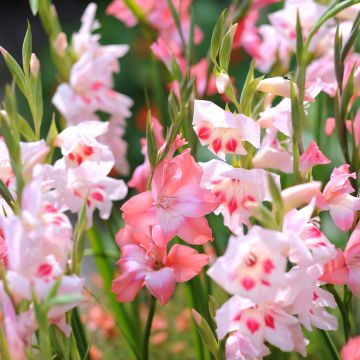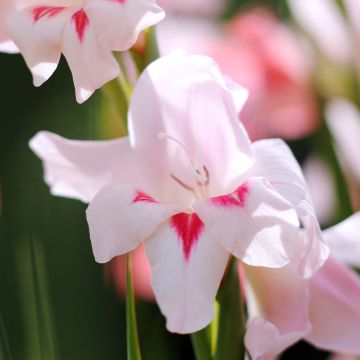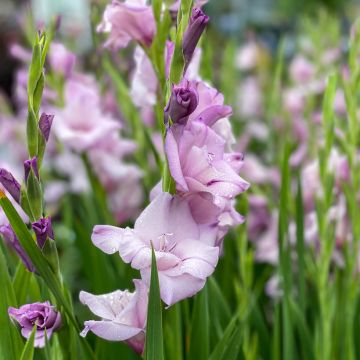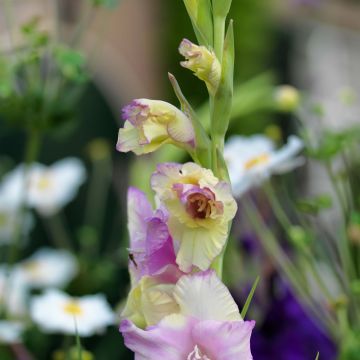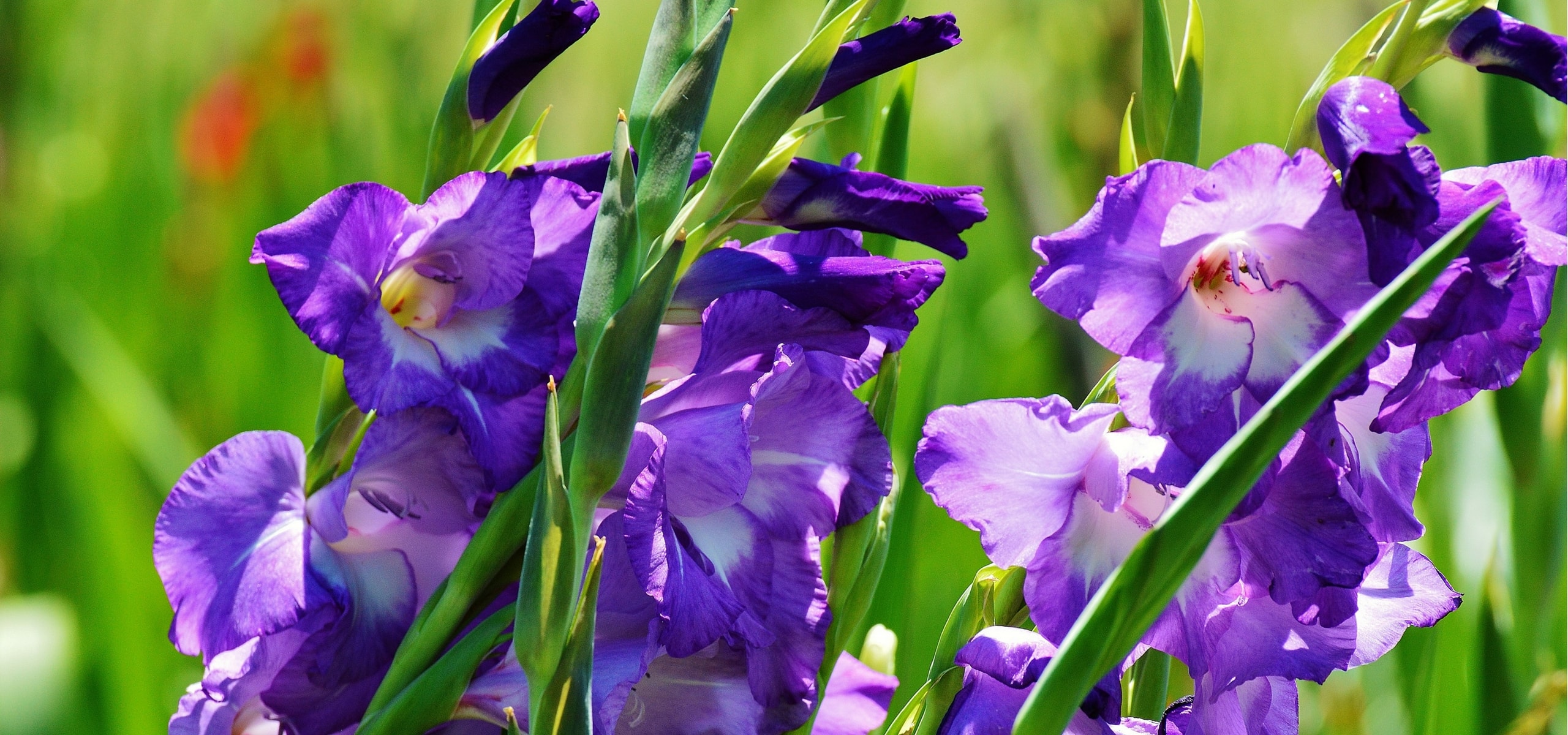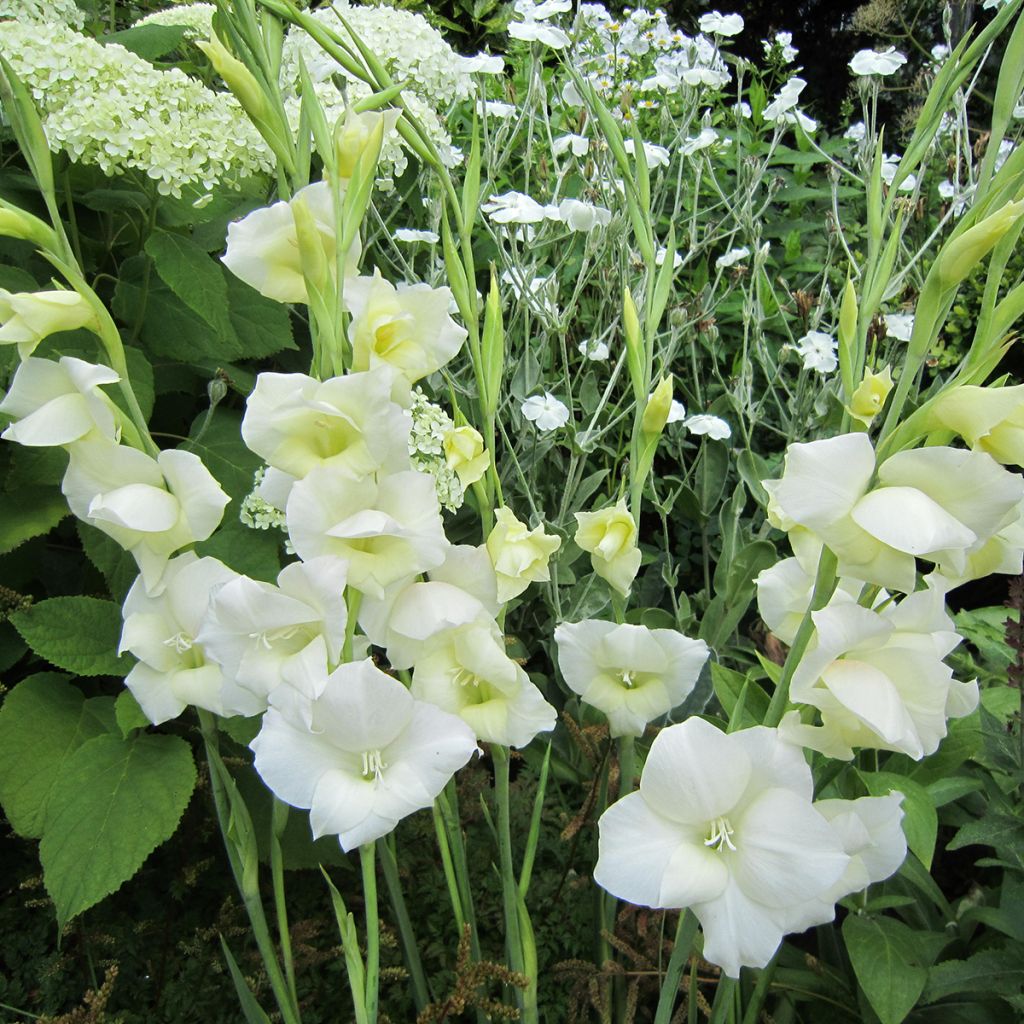

Gladiolus Fiona - Sword Lily
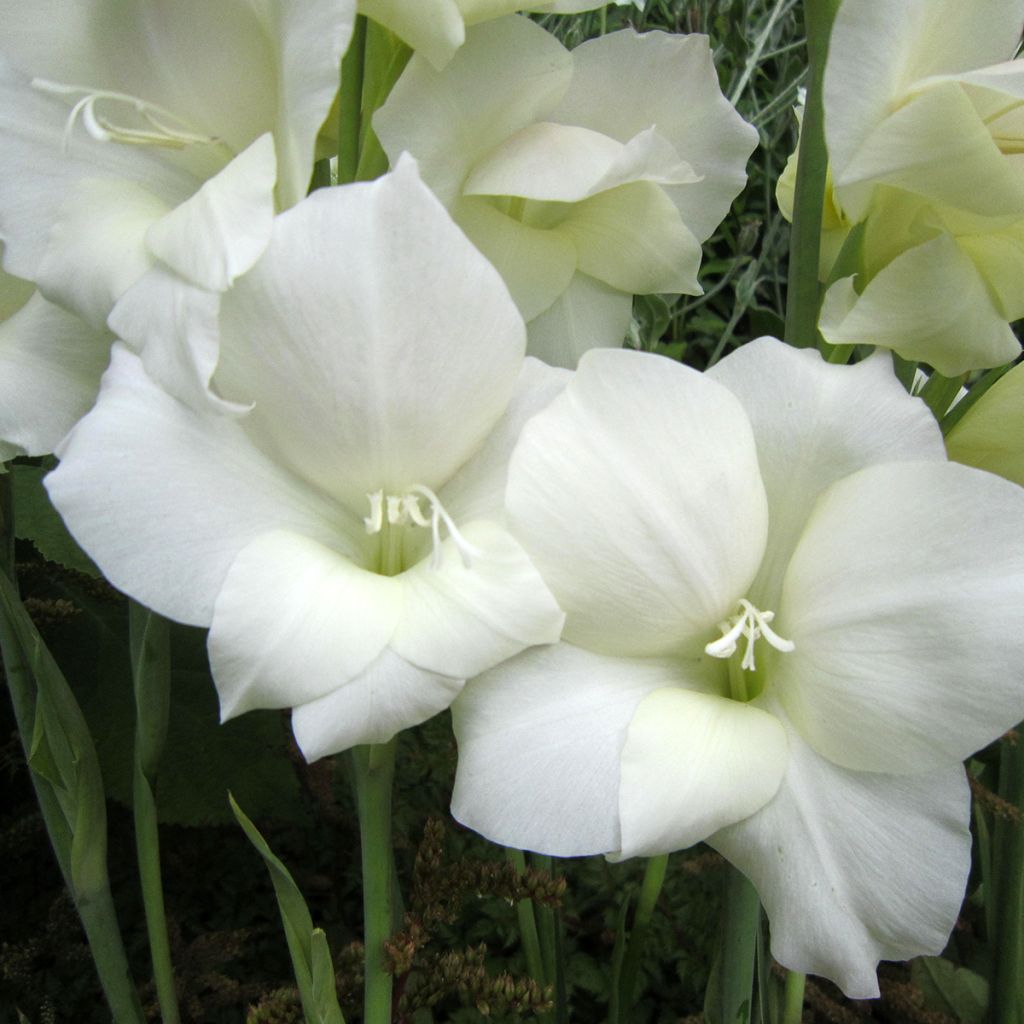

Gladiolus Fiona - Sword Lily
Gladiolus Fiona - Sword Lily
Gladiolus primulinus Fiona
Sword Lily, Primrose Gladiolus
Special offer!
Receive a €20 voucher for any order over €90 (excluding delivery costs, credit notes, and plastic-free options)!
1- Add your favorite plants to your cart.
2- Once you have reached €90, confirm your order (you can even choose the delivery date!).
3- As soon as your order is shipped, you will receive an email containing your voucher code, valid for 3 months (90 days).
Your voucher is unique and can only be used once, for any order with a minimum value of €20, excluding delivery costs.
Can be combined with other current offers, non-divisible and non-refundable.
Why not try an alternative variety in stock?
View all →This plant carries a 6 months recovery warranty
More information
We guarantee the quality of our plants for a full growing cycle, and will replace at our expense any plant that fails to recover under normal climatic and planting conditions.
Would this plant suit my garden?
Set up your Plantfit profile →
Description
Gladiolus Fiona is a small-sized Gladiolus, easy to integrate into flower beds. Its small flowers have an undeniable natural grace. Throughout the summer, it produces thin and elegant stems that are adorned with white flowers from bottom to top, which stand out beautifully against the dark green foliage. This sun-loving Gladiolus needs no staking, is perfect with plants with vibrant blooms and will also create beautiful scenes with pastel colours. Also ideal for beautiful cut flowers.
The Gladiolus genus belongs to the Iridaceae family, which includes numerous ornamental plants, such as Crocus, the sculptural Tigridia, and of course, Irises. The plant gets its scientific name from Latin, Gladiolus means "small sword", referring to the shape of its leaves. There are over 260 botanical species of Gladiolus, the majority of which originate from South Africa and tropical Africa. There are also numerous hybrids and horticultural varieties divided into three main groups: Grandiflorus (large-flowered), Primulinus (small-flowered), and Nanus (butterfly).
Fiona is a variety named after the wife of Mark van Winsen, a Dutch breeder. He did not create a crossbreed, but started with a botanical species classified in 1991 under the name Gunung Gedeh, a mountain in Sumatra. This Gladiolus has been naturalised there for decades, after being introduced from Europe or Africa. While its origin is somewhat uncertain, its ornamental value is very real. Its long, narrow, dark green leaves provide a beautiful backdrop for its light-coloured flowers. In late spring, thin stems rise from the narrow clump, bearing up to ten flower buds ranging in colour from creamy white to pale yellow. From July to September, or even October, lovely flowers bloom, initially white with a yellow centre, turning completely white as they mature. The flowers have six tepals (the term encompasses the three petals and three sepals, which have a very similar appearance), with the upper tepal curiously curved upwards. The storage organ is a corm, which is a swollen stem with scales. Each corm will produce 2 or 3 flower spikes.
This beautiful Gladiolus will blend perfectly with other plants in the same style. Place a few corms in front of the Hydrangea macrophylla Zorro, a Hydrangea with blue flat heads and black stems to create an exceptional scene. An English rose from David Austin, such as The Alnwick Rose, will also be a perfect companion. Its double cupped pink flowers irresistibly evoke the charm of old roses and will complement the whiteness of your Gladiolus. To perfect the composition, nothing beats a carpet of Saponaria Max Frei, with a multitude of small, soft pink flowers throughout the summer.
Plant habit
Flowering
Foliage
Botanical data
Gladiolus
primulinus
Fiona
Iridaceae
Sword Lily, Primrose Gladiolus
Cultivar or hybrid
Other Gladioli
View all →Planting and care
Gladiolus 'Fiona' loves rich, fertile, well-drained soils, especially sandy, and hates compact clay. Plant it in full sun. Space the bulbs (corms) 10 to 15 cm (4 to 6in) apart and cover them with 10 cm (4in) of soil. Avoid using manure to fertilise the soil, as it promotes bulb rot, even though Fiona proves to be resistant to Fusarium, a pathogenous fungus in the soil. Gladioli are generally tender, so they should be dug up when they are faded or immediately after the first frosts. Cut the leaves and let them dry in a well-ventilated place for three weeks. Separate the old bulbs and store the new bulbs and bulblets throughout the winter in a cool place, but protected from frost. The bulblets will flower in two years. It is advisable not to plant gladiolus bulbs in the same place for several years in a row. An annual rotation will yield better results. In mild climates, corms can be planted in September-October and left in the ground over winter without damage.
Planting period
Intended location
Care
Planting & care advice
This item has not been reviewed yet - be the first to leave a review about it.
Haven't found what you were looking for?
Hardiness is the lowest winter temperature a plant can endure without suffering serious damage or even dying. However, hardiness is affected by location (a sheltered area, such as a patio), protection (winter cover) and soil type (hardiness is improved by well-drained soil).

Photo Sharing Terms & Conditions
In order to encourage gardeners to interact and share their experiences, Promesse de fleurs offers various media enabling content to be uploaded onto its Site - in particular via the ‘Photo sharing’ module.
The User agrees to refrain from:
- Posting any content that is illegal, prejudicial, insulting, racist, inciteful to hatred, revisionist, contrary to public decency, that infringes on privacy or on the privacy rights of third parties, in particular the publicity rights of persons and goods, intellectual property rights, or the right to privacy.
- Submitting content on behalf of a third party;
- Impersonate the identity of a third party and/or publish any personal information about a third party;
In general, the User undertakes to refrain from any unethical behaviour.
All Content (in particular text, comments, files, images, photos, videos, creative works, etc.), which may be subject to property or intellectual property rights, image or other private rights, shall remain the property of the User, subject to the limited rights granted by the terms of the licence granted by Promesse de fleurs as stated below. Users are at liberty to publish or not to publish such Content on the Site, notably via the ‘Photo Sharing’ facility, and accept that this Content shall be made public and freely accessible, notably on the Internet.
Users further acknowledge, undertake to have ,and guarantee that they hold all necessary rights and permissions to publish such material on the Site, in particular with regard to the legislation in force pertaining to any privacy, property, intellectual property, image, or contractual rights, or rights of any other nature. By publishing such Content on the Site, Users acknowledge accepting full liability as publishers of the Content within the meaning of the law, and grant Promesse de fleurs, free of charge, an inclusive, worldwide licence for the said Content for the entire duration of its publication, including all reproduction, representation, up/downloading, displaying, performing, transmission, and storage rights.
Users also grant permission for their name to be linked to the Content and accept that this link may not always be made available.
By engaging in posting material, Users consent to their Content becoming automatically accessible on the Internet, in particular on other sites and/or blogs and/or web pages of the Promesse de fleurs site, including in particular social pages and the Promesse de fleurs catalogue.
Users may secure the removal of entrusted content free of charge by issuing a simple request via our contact form.
The flowering period indicated on our website applies to countries and regions located in USDA zone 8 (France, the United Kingdom, Ireland, the Netherlands, etc.)
It will vary according to where you live:
- In zones 9 to 10 (Italy, Spain, Greece, etc.), flowering will occur about 2 to 4 weeks earlier.
- In zones 6 to 7 (Germany, Poland, Slovenia, and lower mountainous regions), flowering will be delayed by 2 to 3 weeks.
- In zone 5 (Central Europe, Scandinavia), blooming will be delayed by 3 to 5 weeks.
In temperate climates, pruning of spring-flowering shrubs (forsythia, spireas, etc.) should be done just after flowering.
Pruning of summer-flowering shrubs (Indian Lilac, Perovskia, etc.) can be done in winter or spring.
In cold regions as well as with frost-sensitive plants, avoid pruning too early when severe frosts may still occur.
The planting period indicated on our website applies to countries and regions located in USDA zone 8 (France, United Kingdom, Ireland, Netherlands).
It will vary according to where you live:
- In Mediterranean zones (Marseille, Madrid, Milan, etc.), autumn and winter are the best planting periods.
- In continental zones (Strasbourg, Munich, Vienna, etc.), delay planting by 2 to 3 weeks in spring and bring it forward by 2 to 4 weeks in autumn.
- In mountainous regions (the Alps, Pyrenees, Carpathians, etc.), it is best to plant in late spring (May-June) or late summer (August-September).
The harvesting period indicated on our website applies to countries and regions in USDA zone 8 (France, England, Ireland, the Netherlands).
In colder areas (Scandinavia, Poland, Austria...) fruit and vegetable harvests are likely to be delayed by 3-4 weeks.
In warmer areas (Italy, Spain, Greece, etc.), harvesting will probably take place earlier, depending on weather conditions.
The sowing periods indicated on our website apply to countries and regions within USDA Zone 8 (France, UK, Ireland, Netherlands).
In colder areas (Scandinavia, Poland, Austria...), delay any outdoor sowing by 3-4 weeks, or sow under glass.
In warmer climes (Italy, Spain, Greece, etc.), bring outdoor sowing forward by a few weeks.
































